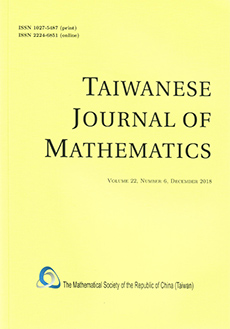Abstract
The T-palindromic quadratic eigenvalue problem $(\lambda^2 B + \lambda C + A)x = 0$, with $A,B,C \in \mathbb{C}^{n \times n}$, $C^T = C$ and $B^T = A$, governs the vibration behaviour of trains. Other palindromic eigenvalue problems, quadratic or higher order, arise from applications in surface acoustic wave filters, optimal control of discrete-time systems and crack modelling. Numerical solution of palindromic eigenvalue problems is challenging, with unacceptably low accuracy from the basic linearization approach. In this survey paper, we shall talk about the history of palindromic eigenvalue problems, in terms of their history, applications, numerical solution and generalization. We shall also speculate on some future directions of research.
Citation
Eric King-wah Chu. Tsung-Ming Huang. Wen-Wei Lin. Chin-Tien Wu. "PALINDROMIC EIGENVALUE PROBLEMS: A BRIEF SURVEY." Taiwanese J. Math. 14 (3A) 743 - 779, 2010. https://doi.org/10.11650/twjm/1500405865
Information





